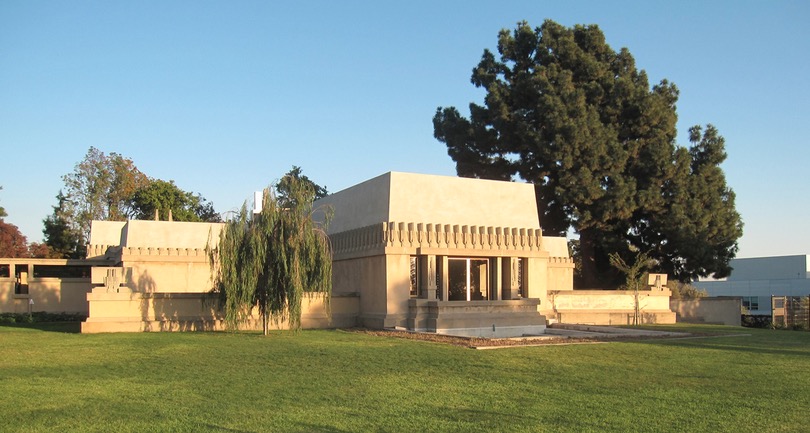Visit Frank Lloyd Wright's Hollyhock House, Los Angeles
Table Of Content

In 2007, the City and Project Restore, a public-private partnership, began planning a project to address structural needs and restoration. In 2010, the project team began four years of work to repair and prevent water damage, seismically strengthen the house, restore historic elements, and reverse past alterations. Built between 1919 and 1921, Hollyhock House was the first Los Angeles commission for the legendary architect Frank Lloyd Wright.
The Los Angeles River Farmers Market
Water is meant to flow from a pool in the courtyard through a tunnel to this inside moat, and out again to a fountain. Disillusioned by the costs of construction and maintenance, Barnsdall donated the house to the city of Los Angeles in 1927[8] under the stipulation that a fifteen-year lease be given to the California Art Club for its headquarters. The club was there until 1942 when the house was almost demolished.[9] The house has been used as an art gallery and as a United Service Organizations (USO) facility over the years. Beginning in 1974, the city sponsored a series of restorations, but the structure was damaged in the 1994 Northridge earthquake.
Los Angeles’s UNESCO World Heritage Site
100 years after Frank Lloyd Wright finished construction on Aline Barnsdall’s Residence A guest house, the City of Los Angeles has concluded phase I restoration of this landmark structure. The first video provides an overview from the project team, discussing the home’s significance, what’s been done in phase I, and what work is still to come. Barnsdall bought Olive Hill in 1919 from the widow of the man who had planted the olive trees. Wright eventually came up with grand plans that suited Barnsdall's theatricality, although she and her daughter never lived in the house that Wright built.
Timeline
He designed it for Aline Barnsdall, a wealthy iconoclast and patron of the arts (learn more about her here). Barnsdall envisioned the house as the centerpiece of an artists’ colony on Olive Hill in the neighborhood of Los Feliz. Hollyhock House was designed by America’s most important 20th-century architect, Frank Lloyd Wright. Aline Barnsdall was also a philanthropist and in 1927 gave the house and the surrounding twelve acres atop Olive Hill (now Barnsdall Park) to the City of Los Angeles as a memorial to her father Theodore. With project delays and cost overruns, he then left the project only partially realized. Within a few years, Barnsdall began to consider gifting the house and surrounding parklands to the City of Los Angeles.
Barnsdall Art Park & Hollyhock House Things to do in Los Feliz, Los Angeles - Time Out
Barnsdall Art Park & Hollyhock House Things to do in Los Feliz, Los Angeles.
Posted: Tue, 01 Dec 2020 08:00:00 GMT [source]
Oil heiress Aline Barnsdall commissioned the house as the centerpiece of a cultural arts complex on Olive Hill, which was to include a major theatre, cinema, artist residences, and commercial shops. For Hollyhock House, her personal residence, Barnsdall asked Wright to incorporate her favorite flower, the hollyhock, into the design. In 1927, Barnsdall donated the house and the surrounding 12 acres (now Barnsdall Park) to the City of Los Angeles. Today, Hollyhock House is owned and operated by the Department of Cultural Affairs (DCA). Yet it was renovated several times, had long suffered from water intrusion, and was damaged in the 1994 Northridge earthquake.
For Hollyhock House, Barnsdall asked Wright to incorporate her favorite flower, the hollyhock, into the home’s design. As with many of Wright's residences, Hollyhock House has an "introverted" exterior with windows that seem hidden from the outside, and is not easy to decode from the outside. The house is arranged around a central courtyard with one side open to form a kind of theatrical stage (never used as such), and a complex system of split levels, steps and roof terraces around that courtyard.

She never questioned the beauty or significance of Wright’s work on Olive Hill, but with early leaks and no theater to speak of, the house had lost its luster for Barnsdall. She did, however, reengage with Wright on numerous occasions after 1921, enlisting him to design a school house for the property as well as preliminary plans for another residence in Beverly Hills; neither were realized. In 1915, Aline Barnsdall, an oil heiress, first approached Frank Lloyd Wright not to build a house but a theater.
Barnsdall Arts Center
Barnsdall Art Park on Olive Hill in Hollywood, California is now owned and run by the City of Los Angeles. The City of Los Angeles is home to many architectural treasures, none more intriguing than Hollyhock House. The Department of Cultural Affairs manages this and four other entities in Barnsdall Art Park, but the focus of this photo journey is on Hollyhock House. Built between 1919 and 1921, the house realized by Wright for Louise Aline Barnsdall is an architectural experiment among landscaped gardens, hardscaped pools, and galleries of art on Olive Hill.

A passionate supporter of the arts, she was a stage producer—earning critical acclaim for her avante-garde productions for children and adults alike in Chicago, New York, and Los Angeles (while awaiting a Wright-designed theater that never came). In 1919, she purchased Olive Hill, a 36-acre mount on Hollywood’s eastern edge and far north of downtown Los Angeles. With the site secured, the commission grew to include plans for the theater, a cinema, artist residences, commercial shops, two guest houses, and a residence for Barnsdall.
Comments
Post a Comment